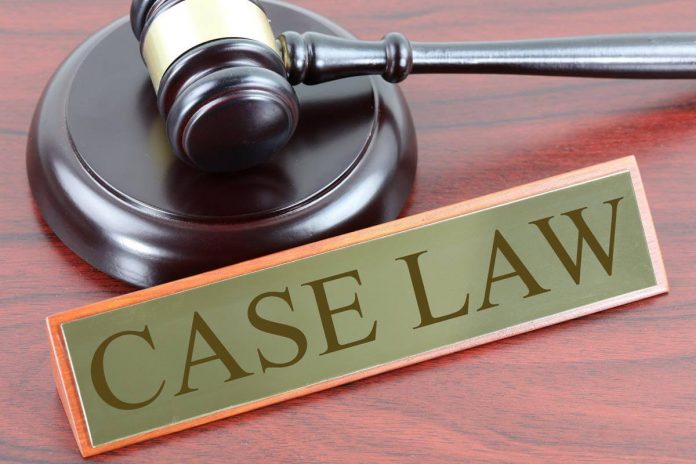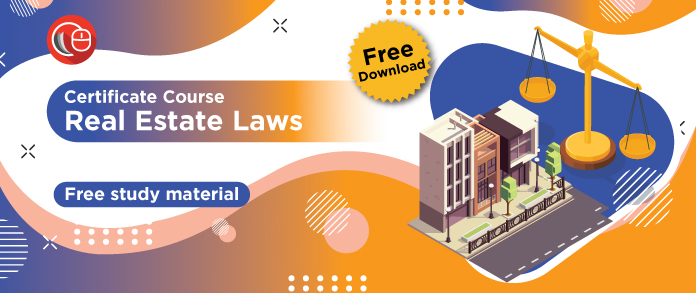This article is written by Hardeep Sodhi, an Engineer, MBA and Legal expert with extensive experience in drafting and reviewing contracts and other legal documents. This article has been edited by Ojuswi (Associate, Lawsikho).
This article has been published by Sneha Mahawar.
Table of Contents
Introduction
Sometimes when a matter transcends borders, the domestic laws bearing upon it may be found in conflict with international conventions and norms. It is then for the final arbiter, the Hon’ble Supreme Court to make a thorough analysis of domestic laws, International conventions and treaties to which India is party, and settle national and international cases to solve to avoid chaos. This conflict of national statutes with international treaties and conventions and how they are finally resolved by the Hon’ble Supreme Court is well-brought out in the case analysed here.
Background
M/s Bhagwandas B. Ramchandani ( Appellant hereon ) is a fruits and vegetable exporter. The Appellant sent two cargoes of these via British Airways( Respondent hereon ) to Canada. Due to flight delays and packaging damage, these cargoes were destroyed. Appellant raised a claim on Respondent. The Respondent offered to settle. But the Appellant did not accept the settlement and about two years later put a suit in Trial Court while approaching other fora in the interim. Respondent contended the suit is barred by the statute of limitations as it holds in India.
The Trial Court held suit is not barred by limitation, counting the period from the date at which Respondent offered settlement ( since the cause of action arose upon Appellant refusing this settlement ). The Trial Court read Rule 30 of the Second Schedule of Carriage by Air Act 1972 and its interpretation that the Limitation Act 1963 applies to proceedings for calculating the period of limitation.
Respondent filed a Writ Petition in High Court which instead held that the Carriage by Air Act 1972 is a later and special statute and so, will have an overriding effect over the earlier and the general statute, viz the Limitation Act 1963. Aggrieved by this decision, the Appellant appealed to the Hon’ble Supreme Court.
Issues
The Hon’ble Supreme Court had to consider the following conflicting provisions as set out in Rule 30 of the Carriage by Air Act 1972. Following were the issues under consideration:
- Does Limitation Act, 1963 apply to the period specified in Rule 30 of the Second Schedule of the Carriage by Air Act, 1972?
This refers to Rule 30(2), a plain reading of which suggests that the Limitation Act 1963 must be used for calculating the period of limitation.
This is what the Appellant relied upon and so, per him, the suit was maintainable.
- Whether the Air Act, 1972, particularly Rule 30 of the Second Schedule expressly excludes the applicability of the Limitation Act, 1963?
This refers to Rule 30(1), a plain reading of which suggests that the right to damages shall be extinguished if an action is not brought within two years reckoned from the date of arrival at the destination, or from the date on which the aircraft ought to have arrived, or from the date on which the carriage stopped.
This is what the Respondent relied upon and so, per him, the suit was not maintainable as this period of two years was over.
Rules
Rule 30 of the Carriage by Air Act 1972 states :
“30. (1) The right to damages shall be extinguished if an action is not brought within two years,
reckoned from the date of arrival at the destination, from the date on which the aircraft ought to have
arrived, or from the date on which the carriage stopped.
(2) The method of calculating the period of limitation shall be determined by the law of the Court
seized of the case”
Going by Rule 30(2), the Appellant relied upon S. 29 of Limitation Act 1963 which states :
29. Savings.—(2) Where any special or local law prescribes for any suit, appeal or application a period of limitation different from the period prescribed by the Schedule, the provisions of section 3 shall apply as if such period were the period prescribed by the Schedule and to determine any period of
The limitation prescribed for any suit, appeal or application by any special or local law, the provisions
contained in sections 4 to 24 (inclusive) shall apply only insofar as, and to the extent to which, they are
not expressly excluded by such special or local law.
S. 3 of the Limitation Act 1963 prescribes the bar of limitation and says that :
3. Bar of limitation.—(1) Subject to the provisions contained in sections 4 to 24 (inclusive), every
suit instituted, appeal preferred, and the application made after the prescribed period shall be dismissed,
although limitation has not been set up as a defence.
Analysis
A conjoint and plain reading of the two sections of Limitation Act 1963 makes clear that the “ special law” will hold ( which is Carriage by Air Act 1972 in this case) over the limitation period specified in Limitation Act 1963, and provisions in S. 4 to 24 of Limitation Act 1963 ( which allow of periods not to be included when determining whether the limitation period has expired or not ) will hold only to the extent they are not expressly excluded by Carriage by Air Act 1972.
The Appellant claimed that Rule 30 of the Carriage by Air Act 1972 has not expressly excluded the applicability of the Limitation Act. Further Rule 30 (2) clearly says that the “method of calculating the period of limitation” has to be based upon the law of the Court seized of the case, which is the Limitation Act 1963 and its provisions which allow for exemption of periods for calculating the Limitation period.
The Respondent instead argued that the exclusion under Section 29(2) can be implied from the provisions of the Air Act,1972. It relied upon the judgement of the Hon’ble Supreme Court in Hukumdev Narain Yadav v. Lalit Narain Mishra, as well as international judgements viz Sidhu v.British Airways and Philips v. Air New Zealand ( UK Courts), Fishman v. Delta Airlines, Kahn v. Trans World Airlines (USA) and Bhatia v. Malaysian Airline System Berhad ( Australia ) in support of its stand.
Deliberations of Hon’ble Supreme Court on Issue no. 1
The Hon’ble Supreme Court took note that International Conventions such as the Warsaw Convention 1929, the Hague Protocol 1995, and the Montreal Convention 1999 have been incorporated into the Carriage by Air Act 1972, thus giving their relevant provisions legal sanctity in India. Further, India has concomitant procedural laws of which Limitation Act 1963 is a branch of adjectival law. However, a clear legal principle states that when the right itself is extinguished, the provisions relating to limitation have no application. Various sections of the Limitation Act 1963 make it clear. For instance, S. 27 of the Limitation Act 1963 recognizes the principle of extinguishment of the Right to Property is an exception to the applicability of the Limitation Act.
The Hon’ble Supreme Court cited several Indian cases bringing out clearly that while usually the right of any party is not destroyed by rules of limitation ( only the remedy is barred but the right continues to exist ), in exceptions the right itself is destroyed and in such cases, no remedy then exists.
For instance, paraphrasing the Supreme Court “ when a suit for possession of the property is barred by limitation, the right to the property itself is destroyed ( S. 27) “. S. 27 of Limitation Act 1963 reads :
Section 27: Extinguishment of property rights.
27. At the determination of the period hereby limited to any person instituting a suit for possessing any property, his right to such property shall be extinguished.
On the other hand, though the right to enforce a debt by judicial process is barred under Section 3 read with the relevant article in the schedule, the right to debt remains and this right may be exercised in any other manner than using a suit. The debt is not extinguished, but the remedy to enforce the liability is destroyed”. For instance, a suit for eviction may lie for non-payment of due rent, even when the suit for recovery of rent has been barred by limitation. This was held in Khadi Gram Udyog Trust v. Ram Chandraji Virajman Mandir .
Analysing Sub-Rule (1) of Rule 30, the Hon’ble Supreme Court noted it uses the terms “ right to damages” and “ extinguishment”. Thus the intention of the law-giver ( Parliament ) is clear that the right to damages would not subsist after the expiry of the period mentioned therein. And once the right itself is extinguished, provisions of the Limitation Act have no application. As held in The East and West Steamship Co. case, once the right of liability is extinguished under the clause, there is no scope for acknowledging the liability thereafter.
So the position of law is clear from the plain language of Rule 30(1).
Rule 30(2), however, brings in serious difficulty as it adopts the applicability of the Limitation Act, 1963 as Courts in India exercise jurisdiction. But in many cases, the period allowed under the Limitation Act 1963 may become more than the period of two years allowed under Rule 30(1), which is the crux of the case here.
The Hon’ble Supreme Court then proceeded to interpret Rule 30 correctly. For this purpose, it relied upon various international conventions including the Vienna Convention on Law of Treaties. The legislative history of Article 29 of the Warsaw Convention was also probed, including the deliberations of various countries on the draft of Article 29. It was finally concluded that sub-Article (2) of Article 29 as finally drafted excluded the suspension of any period of limitation.
As clearly set out in the judgement of the Appellate Division of the Supreme Court of New York in Kahn v. Trans World Airlines :
“In addition, such an intent on the part of the draughtsmen is fully consistent with one of the Convention’s overall purposes-that of establishing “a uniform body of worldwide liability rules to govern international aviation.”
The Hon’ble Supreme Court then proceeded to consider various International Judgements as well as some Indian ones, while bearing fully in mind that in interpreting international treaties and conventions courts must try to make their interpretation align as closely as possible with courts of other jurisdictions ( in other countries here ). For instance, in the US case Fishman v. Delta Air Lines Inc an infant traveller was burnt by an air hostess. The claim was brought by its mother after a period of two years, claiming that the local limitation law suspends limitations for infants. The Court observed that looking at the drafting minutes of the Warsaw Convention, it is clear that “ the drafters of the Convention specifically considered and rejected a proposed provision that would have allowed the limitations period to be tolled according to the law of the forum court.”
Considering many cases internationally as well as in India, the Hon’ble Supreme Court finally held that for uniformity and also to subserve the purpose and object of the Warsaw Convention, Rule 30 (2) of Carriage by Air Act 1972 does not enable applicability of exclusion of periods to reckon the period of two years.
Deliberations of Hon’ble Supreme Court on Issue no. 2
As already elaborated above, the Supreme Court has held that per Rule 30(1) right to damages itself is extinguished after the expiry of the period of two years and therefore the provisions of the Limitation Act have no application as there is no right subsisting for enforcement.
However, the Appellant contended that the Carriage by Air Act 1972 does not expressly exclude the application of the Limitation Act and so, its provisions must be considered. Further, Rule 30(2) of the Carriage by Air Act 1972 reiterated the applicability of the Limitation Act 1963.
The Supreme Court stated that express empowerment is to be gathered by provisions of the statute, as has been held in Shanmugam v. Commissioner for Registration. Hukumdev Narain Yadav v. Lalit Narain Mishra was also evaluated.
Considering all these matters in detail, the Court held that Rule 30 of the Carriage by Air Act 1972, expressly excludes the applicability of the Limitation Act,1963, and answered issue 2 accordingly.
Conclusion
As elaborated above, the Hon’ble Supreme Court has in this case gone much beyond the submission of various parties and has instead looked at the genesis of various laws and treaties governing international cargo transport and travel. Finally, to arrive at a harmonious alignment with various International Conventions, Rule 30 of the Carriage by Air Act 1972 has been clarified to rule out the applicability of the Limitation Act 1963. In effect, it makes Rule 30(2) redundant and holds only Rule 30(1) valid in India, harmonising it with laws elsewhere globally. This brings about clarity in international cargo and personal travel claim settlements.
Students of Lawsikho courses regularly produce writing assignments and work on practical exercises as a part of their coursework and develop themselves in real-life practical skills.
LawSikho has created a telegram group for exchanging legal knowledge, referrals, and various opportunities. You can click on this link and join:
Follow us on Instagram and subscribe to our YouTube channel for more amazing legal content.
 Serato DJ Crack 2025Serato DJ PRO Crack
Serato DJ Crack 2025Serato DJ PRO Crack












 Allow notifications
Allow notifications



